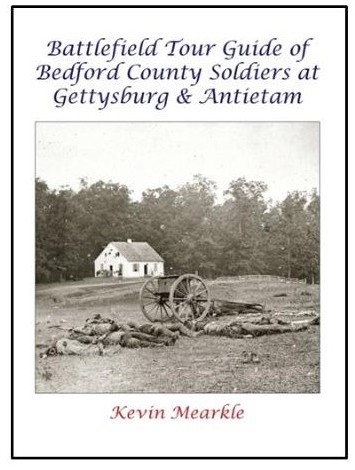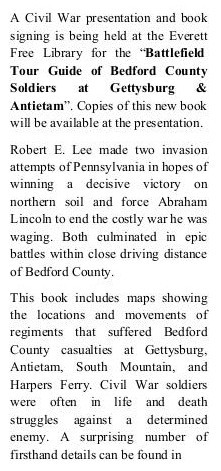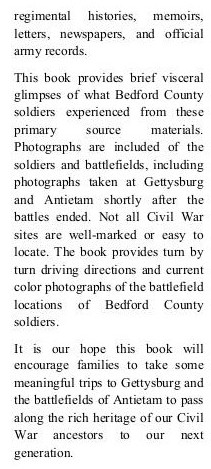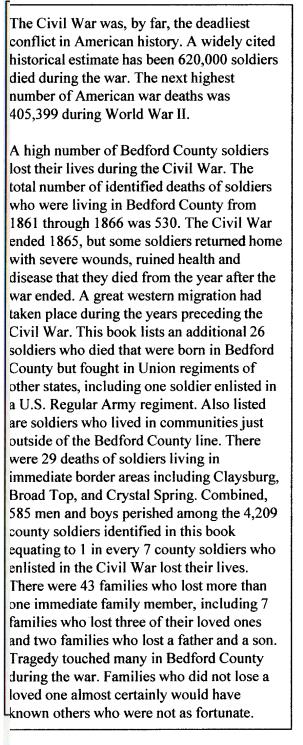

Everett, PA.
The “Battlefield Tour Guide of Bedford County Soldiers at Gettysburg & Antietam” book is now available.
Robert E. Lee made two invasion attempts of Pennsylvania in hopes of winning a decisive victory on northern soil and force Abraham Lincoln to end the costly war he was waging. Both culminated in epic battles within close driving distance of Bedford County.
Lincoln made a “vow” to God during the first invasion. If the Rebel army was driven back, he would make a declaration of freedom to the slaves. Bedford County soldiers fought on the steepest terrain of any battle during the Civil War at South Mountain, were part of a garrison that defended Harper’s Ferry, and were key combatants in turning back the Rebel army on the rolling hills surrounding the town of Sharpsburg near Hagerstown. Soon after the battle, Antietam became recognized as one of the most transformational events in American history when Abraham Lincoln issued the Emancipation Proclamation.
The most famous battle ever fought in the Western Hemisphere is a short distance down the road on the Lincoln highway. Men and boys from Bedford County were among the outnumbered soldiers whose heroics on the first day of the battle enabled the Union Army to seize the high ground around Gettysburg, which was successfully defended during the next two days. On the
afternoon of the second day, county soldiers took part in some of the most horrific fighting during the battle of Gettysburg in and near the Wheatfield. One soldier who lived on the Bedford-Blair County line was one of only 64 Union soldiers to be awarded the Medal of Honor at Gettysburg for heroism near the foot of Little Round Top.
This book includes maps showing the locations and movements of regiments that suffered Bedford County casualties at Gettysburg, Antietam, South Mountain, and Harpers Ferry. Civil War soldiers were often in life and death struggles against a determined enemy. A surprising number of firsthand details can be found in regimental histories, memoirs, letters, newspapers,
and official army records. This book provides brief visceral glimpses of what Bedford County soldiers experienced from these primary source materials. Photographs are included of the soldiers and battlefields, including photographs taken at Gettysburg and Antietam shortly after the battles ended. Not all Civil War sites are well-marked or easy to locate. The book provides
turn by turn driving directions and current color photographs of the battlefield locations of Bedford County soldiers.
It is our hope this book will encourage families to take some meaningful trips to the battlefields of Gettysburg and Antietam to pass along the rich heritage of our Civil War ancestors to our next generation.
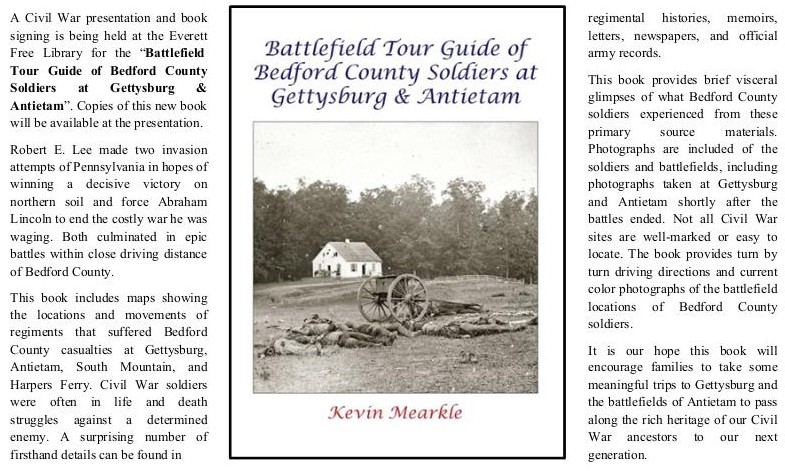
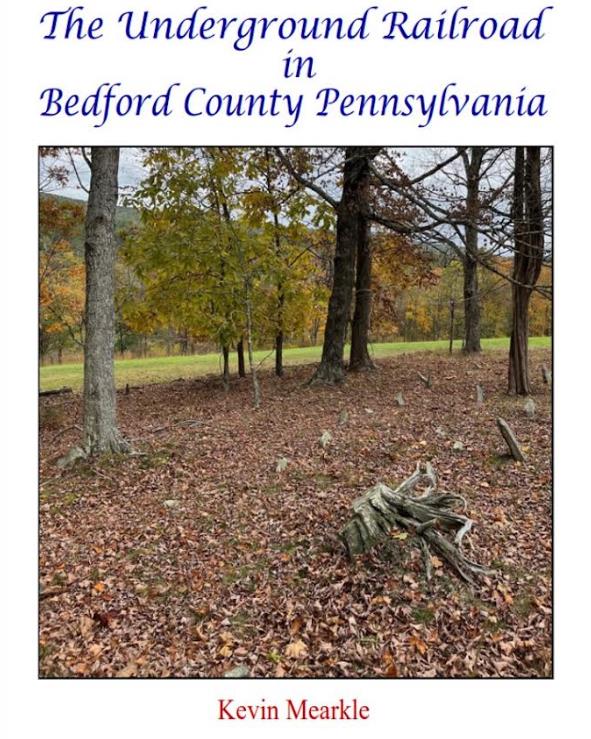
study noted, “of all the counties in southwestern Pennsylvania, Bedford County probably had the most active
free black population and rigorous Underground Railroad traffic.”
Over time, a loose network of white and black supporters of enslaved people formed to serve as guides and
provide refuge in secretive hideouts throughout Bedford County. Their stories have been retold in newspapers,
local history books and family history papers. Bedford County is blessed to have an unusual amount of
information about the Underground Railroad era. Over 50 Underground Railroad agents have been referenced
in various documents. Two Bedford County agents have numbers attributed to their efforts. The 1891 obituary
of black abolitionist John Fidler, stated: “Mr. Fidler was the leader of the Underground Railroad and hundreds
of colored people, probably more than a thousand, were helped on their way to freedom through him.” An 1884
biography of Benjamin H. Walker noted: “He has assisted fully five hundred fugitives to gain their liberty, often
keeping several of them concealed about his premises for weeks together.”
The book contains over 100 photographs and images, including 50 pictures of individuals. Other photographs
and images feature landmarks, slave registration documents and reward advertisements for runaway enslaved
people in nearby newspapers. This book compiles what has been written and references where it was first
documented. Many of the locations cited in these stories have been identified, including an unexpected number
of structures still standing today. Verbatim excerpts of original source materials are referenced to allow an unedited evaluation of what has been written.
printed in the two Bedford newspapers provides insights into the divisiveness of the era. The Bedford Gazette
and the Bedford Inquirer sat on opposite sides of the political divide. A nasty salvo from one newspaper editor
often triggered an even nastier volley in response. Every insult imaginable was hurled that could have been
uttered in polite company. Excerpts of memorable articles are provided, including one calling Abraham
Lincoln, “the poor imbecile who occupies and disgraces the Presidential chair.”
The Underground Railroad story in Bedford County illustrates the best of human nature and the worst in
humanity. It is a story of courageous people risking bodily harm, fleeing into an unfamiliar world and uncertain
future. It is a story of kind people risking incarceration and financial ruin to help strangers they would never
meet again. It is also a story of despicable individuals who pursued freedom seekers for financial gain and those
who tipped off the slave catchers for a share of the reward. More than a century and a half after it ceased to
exist, the Underground Railroad remains an unusually compelling story.

